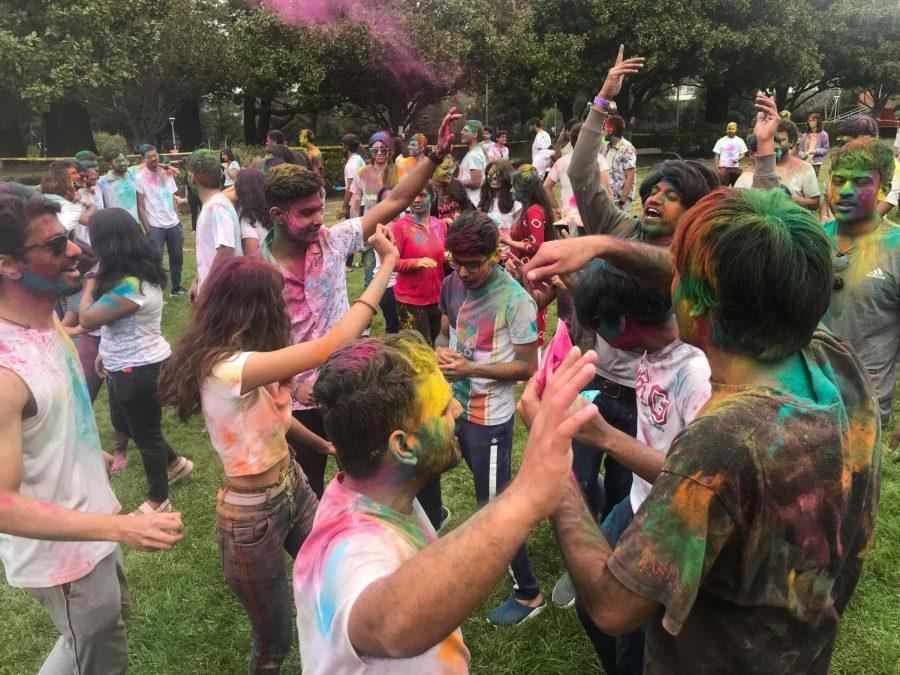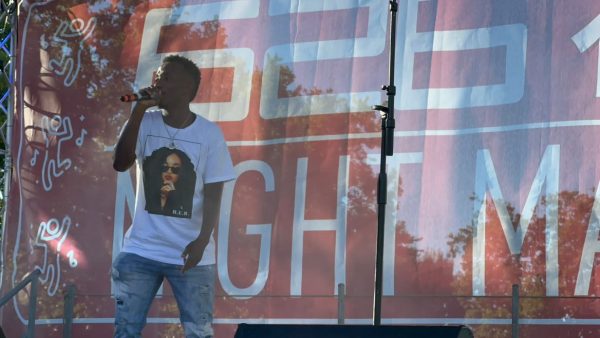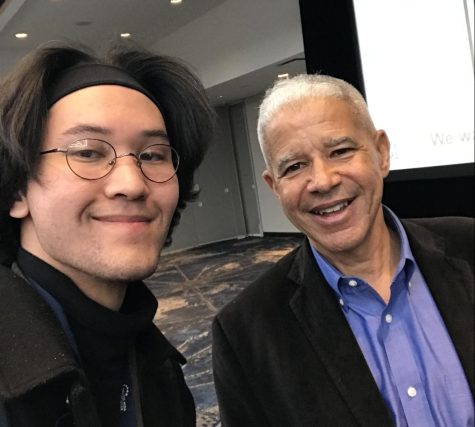Holi: A Holiday of Unity
March 24, 2022
How an ancient Hindu tale of Good vs. Evil brings CSUEB together
The Music Building lawn became an eruption site of colored powder as two hundred students gathered to celebrate Holi, the Festival of Colors, on March 19, 2022. The event was the result of a collaboration between Hindu YUVA (Youth for Unity, Virtues, and Action), the Gujarati Students Association, the Indian Student Organization, and the International Student Organization.
Celebrating Holi at California State University, East Bay — a university recognized for the diversity of its student body — provides a fertile opportunity for cultural appreciation and dialogue between students of various backgrounds, amplifying the multifaceted and inclusive spirit of the East Bay.
Presumed to predate the birth of empyrean canons of Christianity and Islam, one of the premises behind the celebration of Holi originated as a Hindu folk tale, depicting the triumph of good vs. evil. Ancient king Hiranyakashipu coveted immortality, leading him to instill within himself unassailable discipline through focused meditation. The king’s determination paid dividends, as his tenacity was noted and rewarded by Lord Brahma with a boon of invulnerability.
Now invincible, Hiranyakashipu perceived himself to be a deity-adjacent figure, seeking universal worship and harboring ambitions of one day ruling Heaven, the Earth, and the Underworld. Prahlad, the demon king’s son, contested his father’s divinity, instead devoting himself to Narayana, a major deity of preservation within the Hindu faith and one of Lord Vishnu’s many avatars.
Prahlad’s defiance enraged Hiranyakashipu, who ordered Holika — the king’s sister and Prahlad’s aunt — to immolate his son. Holika, a demoness, had a supernatural aspect similar to the king, hers being imperviousness to fire. She invited Prahlad to sit on her lap while sitting on a pyre, though the king’s son survived the gambit and emerged unscathed by reciting Naarayana’s name, while Holika was engulfed by the flames, in spite of her resistance to the element. Thus, the principal lore of Holi is one of the righteous and pious overcoming the temptations of non-righteousness and knavery. Now, the start of Holi is marked by lighting bonfires to drive away evil spirits and as tribute to Prahlad’s devoutness to Lord Vishnu and the defeat of malevolence.
Another facet of this sacred occasion is the celebration of love and the fertility of spring. The founding tale follows Lord Krishna and Radha. Both shared a mutual affection for one another, though differences in skin color strained their union. Yashoda, Krishna’s mother, proposed that both lovers mask their complexions with colored dyes. Hence, smearing one another in colored powder commemorates unity, unity that transcends race, class, caste, or status.
For that reason, attendees are encouraged to don white in an exercise of humility and vulnerability, rendering the individual a canvas and the community an artist, as each stroke and encounter adds to the nonpareil composition of resplendent hues that is you. Shobhit Gupta, a representative for the local Hindu YUVA chapter, summarized Holi as a “true opportunity to remove ignorance from the eyes.”
For CSUEB’s vast Indian diaspora, Holi holds particular significance as a fun vessel to reconnect with their home and cultural heritage. Dakshayani Seemakurti, an international first-year from India, commented that celebrating Holi at CSUEB served as a useful avenue to meet fresh faces and a pleasant retreat into a familiar environment, evoking the blissful bliss memories of her school days back in India.
Foregoing sentimentality, many attendees simply enjoy the revelry. Fnu Vansh, a first-year student and budding online personality in attendance, said that his favorite part of Holi is the exchange of colored powder, noting that “colors stay on our clothes almost forever, so they remain as a memory that we can feel nostalgia for.”
Regardless of its Hindu origin, the organizers welcomed guests of all backgrounds to join the festivities. One such guest was Chema Facil, an international student from Spain, commenting on the event’s inviting atmosphere and the attendees’ affable disposition — culminating in an unforgettable first impression of Holi. Though it might be Yik Choon Heng, a Construction Management student from Malaysia, that best described why Holi is such a beloved event: “Color, music, pizza, drinks, dance, and friends.” Perhaps he was a little hungry.
The flurry of tints and haphazard streaks of color coalesce to create an exuberant and reflective palette amongst a sea of a similarly vibrant collective, defining unity as the reverence of the individual within a greater organism, regardless of what color our shirts and faces may be. One attendee encapsulated Holi as a celebration befitting California and CSUEB, stating, “That is the best part of California and this campus — the diversity.”

















